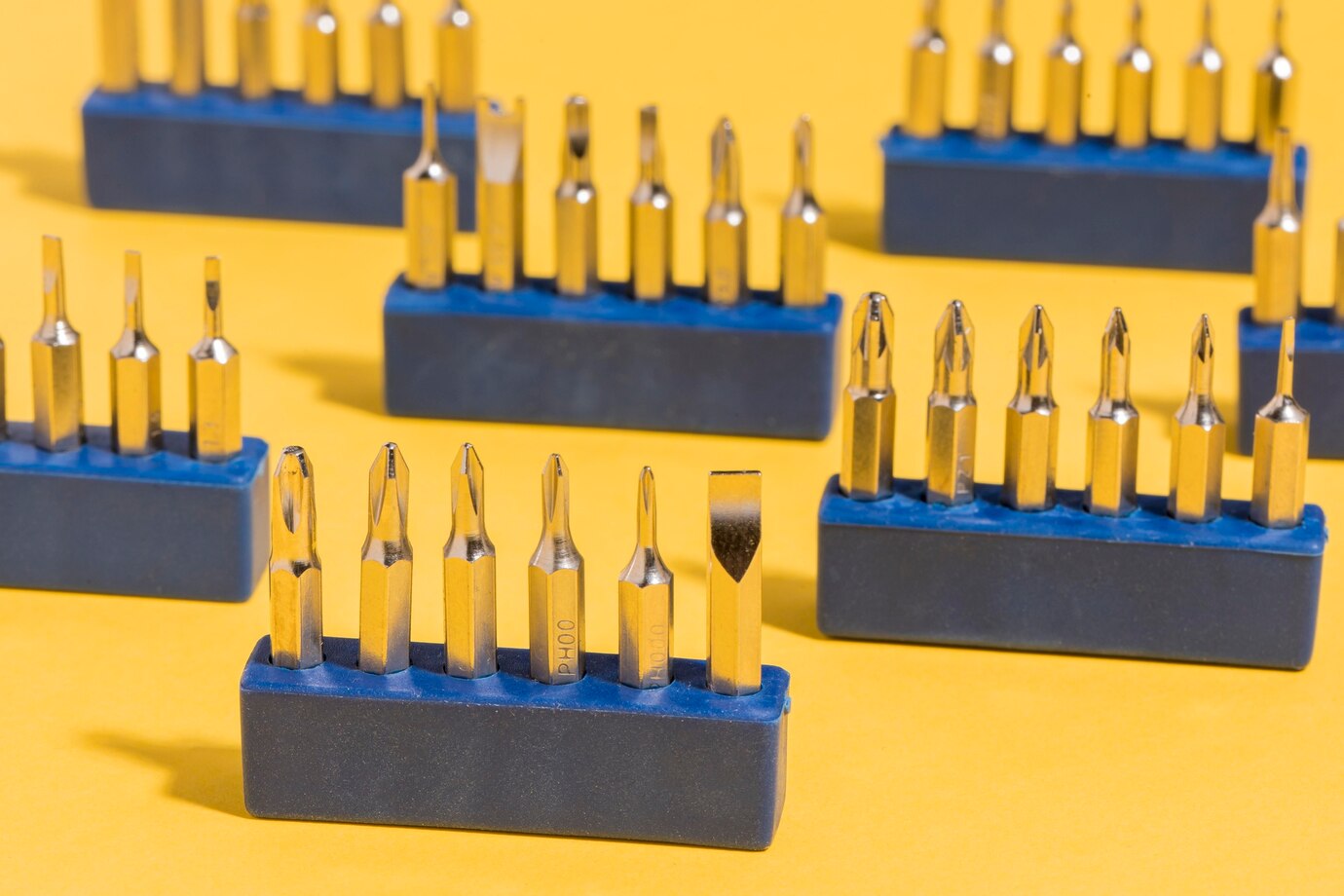In the fast-paced world of technology, IT technicians play a crucial role in keeping devices, networks, and systems functioning seamlessly. From fixing hardware issues to performing preventative maintenance, having the right tools is essential to any technician’s success. Whether you’re working on a desktop, laptop, or server, there are core tools that every technician should have on hand. In this article, we’ll explore the top 10 IT hardware repair tools that are essential for troubleshooting and repairing a wide range of devices.
Table of Contents
1. Screwdriver Set with Multiple Bits
At the heart of every IT technician’s toolkit is a comprehensive screwdriver set. Computers, laptops, and other hardware are filled with a variety of screws that require different bit sizes. A high-quality screwdriver set with multiple bits, including Phillips, flathead, Torx, and hex, allows you to disassemble and reassemble devices with precision.
Key Features to Look For:
- Magnetic tips to keep screws secure and prevent them from dropping into hard-to-reach places.
- Ergonomic handles for comfort during extended use.
- A wide selection of bits to ensure compatibility with different devices.
Why It’s Essential: Without the proper screwdriver set, you risk damaging screws or being unable to access certain parts of a device. A versatile set gives you the flexibility to handle a wide range of repair tasks, making it a cornerstone of your IT hardware repair tools.
2. Anti-Static Wrist Strap
Static electricity can be devastating to sensitive computer components like motherboards, RAM, and CPUs. Even a small discharge of static electricity can cause irreparable damage to these parts. An anti-static wrist strap is designed to ground you, preventing the buildup of static electricity and ensuring that your repairs are safe.
Key Features to Look For:
- Adjustable strap for a secure and comfortable fit.
- Long cord to allow freedom of movement while working on devices.
- Reliable grounding clip that can attach to a metal surface.
Why It’s Essential: Protecting delicate electronics from electrostatic discharge (ESD) should be a top priority for any technician. Using an anti-static wrist strap reduces the risk of damaging expensive and critical components during repairs.
3. Compressed Air Canister
Over time, dust and debris can accumulate inside computers and other electronic devices, leading to overheating and performance issues. Compressed air allows you to clean out fans, heat sinks, and other hard-to-reach areas without physically touching or damaging components.
Key Features to Look For:
- Nozzle attachment for precise air direction.
- Strong airflow for effective dust removal.
- Non-flammable and safe for use on electronics.
Why It’s Essential: Dust buildup is one of the most common causes of hardware malfunctions. Regularly cleaning devices with compressed air can prolong the lifespan of components and keep them running at optimal efficiency.
4. Multimeter
A multimeter is an essential diagnostic tool for any IT technician. It allows you to measure electrical properties like voltage, current, and resistance. Whether you’re testing power supplies, checking for faulty connections, or verifying the functionality of hardware components, a multimeter is invaluable for troubleshooting.
Key Features to Look For:
- Digital display for easy reading of measurements.
- Auto-ranging capabilities to simplify usage.
- Compact design for portability.
Why It’s Essential: A multimeter helps you identify power-related issues, whether it’s a malfunctioning power supply, dead battery, or broken circuit. Having this tool in your kit enables quick and accurate diagnostics, making it one of the most important IT hardware repair tools.
5. Cable Tester
Network connectivity problems are common in IT hardware repairs, and a cable tester is a vital tool for diagnosing issues with Ethernet cables and other network connections. It helps you verify the integrity of cables, identify broken wires, and confirm proper termination.
Key Features to Look For:
- Compatibility with various cable types (Ethernet, coaxial, USB).
- LED indicators for clear results.
- Simple operation for quick testing.
Why It’s Essential: Connectivity issues can be caused by faulty cables, and replacing them unnecessarily wastes time and resources. A cable tester allows you to quickly pinpoint cable problems, ensuring reliable network performance and faster repairs.
6. Pry Tools and Spudgers
Modern electronics are often designed to be sleek and compact, which means many devices don’t have easily accessible screws or components. Pry tools and spudgers are made from non-conductive materials and are designed to gently open devices without causing damage.
Key Features to Look For:
- Durable plastic construction to avoid scratching surfaces.
- A variety of shapes and sizes for different devices.
- Thin edges for precision.
Why It’s Essential: Using metal tools to open plastic or fragile electronic casings can lead to scratches, cracks, or breaks. Pry tools and spudgers allow you to open devices safely and efficiently, making them indispensable for delicate hardware repairs.
7. Thermal Paste
Thermal paste is applied between a CPU and its heat sink to improve heat transfer. Over time, the paste can degrade, leading to overheating issues. Reapplying thermal paste ensures that the CPU remains cool and functions efficiently.
Key Features to Look For:
- High thermal conductivity for effective heat transfer.
- Easy-to-apply syringe packaging.
- Non-conductive formula to prevent electrical issues.
Why It’s Essential: If a system is overheating, one of the simplest fixes is to replace the thermal paste. It’s a low-cost solution that can prevent more serious damage to the CPU and keep the system running smoothly.
8. Flashlight or Headlamp
Working on IT hardware often involves peering into dark or confined spaces. A small flashlight or headlamp provides hands-free illumination, allowing you to see what you’re doing without straining your eyes.
Key Features to Look For:
- Adjustable brightness for different lighting conditions.
- Compact size for easy storage.
- Long battery life.
Why It’s Essential: Clear visibility is crucial for making precise repairs. Whether you’re working inside a server rack or behind a desktop, good lighting helps you work efficiently and avoid mistakes.
9. External Hard Drive or USB Drive

Data preservation is a key concern during hardware repairs. Having an external hard drive or USB drive on hand allows you to back up important data before starting any repairs. This ensures that no data is lost if you need to reinstall the operating system or replace a failing hard drive.
Key Features to Look For:
- Sufficient storage capacity for large files.
- Fast transfer speeds (USB 3.0 or higher).
- Durability for repeated use.
Why It’s Essential: Backing up data is a crucial step before performing any hardware repair. An external hard drive or USB drive allows you to create backups quickly and securely, preventing data loss and ensuring peace of mind for your clients.
10. Laptop and Smartphone Repair Kit
Laptops and smartphones are built with smaller, more intricate components than desktops, and they require specialized tools for disassembly. A dedicated laptop and smartphone repair kit comes with the precision screwdrivers, tweezers, and pry tools necessary for working on these devices.
Key Features to Look For:
- Precision screwdrivers for tiny screws.
- Tweezers for handling small components.
- Pry tools and suction cups for opening devices.
Why It’s Essential: As laptops and smartphones become more prevalent in IT environments, having a dedicated kit for these devices allows you to perform repairs quickly and effectively. These tools are designed for the unique challenges of mobile devices, making them a critical addition to your IT hardware repair tools.
Conclusion: Building the Ultimate Toolkit
Assembling a well-rounded set of IT hardware repair tools is essential for any technician who wants to be prepared for the wide variety of tasks they’ll encounter on the job. From screwdrivers to cable testers and anti-static wrist straps, each tool in your kit plays a vital role in ensuring that repairs are done safely and efficiently.
By investing in high-quality tools and understanding how to use them effectively, you’ll be able to tackle complex repairs with confidence, improve your troubleshooting skills, and provide top-notch service to your clients. Whether you’re working on a desktop, laptop, or network, having the right IT hardware repair tools in your toolkit is the key to success.
Andrea Balint is a writer and researcher focused on human behavior, workplace psychology, and personal growth. Through her work at CareersMomentum, she explores how mindset, leadership, and emotional intelligence shape modern careers. With a background in communication and HR development, she transforms complex ideas into practical insights that help readers build clarity, confidence, and professional purpose.
